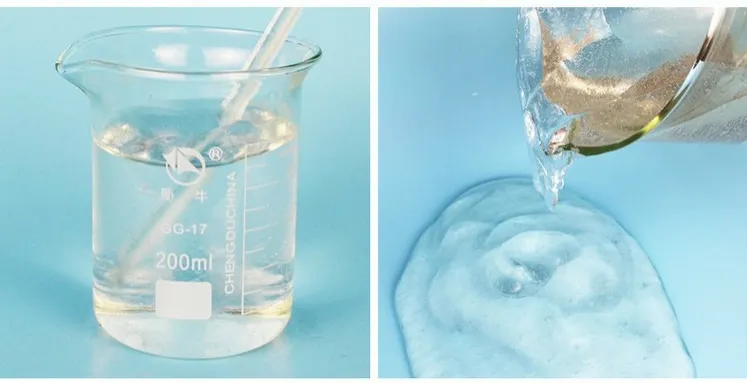
Exploring the World of Cellulose: Types, Derivatives, and Industrial Uses
Cellulose is a fundamental organic polymer found in the cell walls of plants. As a biodegradable and renewable resource, it has become increasingly important in sustainable manufacturing. This article explores various cellulose types, including hydroxymethyl propyl cellulose, ethyl hydroxyethyl cellulose, methyl ethyl hydroxyethyl cellulose, and newer innovations such as cnf cellulose (cellulose nanofiber). We also delve into its enzymatic breakdown by cellulase and its use in products like cellophane cellulose and cellulose film.
From cotton linter cellulose to enzymatic decomposition and pricing concerns like hydroxy ethyl cellulose price, cellulose plays a multifaceted role across industries—from packaging to pharmaceuticals, textiles to food.

Key Cellulose Types and Their Chemical Derivatives
Modified Cellulose for Functional Performance
The chemical versatility of cellulose allows it to be transformed into a wide range of derivatives, each with unique functional properties:
Hydroxymethyl propyl cellulose (HMPC) is a water-soluble cellulose ether used for its thickening and film-forming qualities in construction, food, and cosmetics. It offers good thermal gelation and is widely used in pharmaceutical tablet coating and food stabilizers.
Ethyl hydroxyethyl cellulose (EHEC) provides excellent salt tolerance and water retention, making it ideal for latex paints, adhesives, and personal care products. It also adds viscosity and stability without interfering with other additives.
Methyl ethyl hydroxyethyl cellulose (MEHEC) combines the properties of methyl and ethyl cellulose, offering enhanced film-forming ability and water retention. It is used in industrial applications like ceramics, construction, and detergents.
These cellulose types offer excellent thermal stability, biodegradability, and compatibility with other materials, making them desirable in a range of formulations.

Cellulose Nanofibers and Cotton Linter Cellulose
Another innovation gaining traction is cnf cellulose—cellulose nanofibers extracted from wood pulp or agricultural waste. These ultra-fine fibers exhibit remarkable mechanical strength, barrier properties, and flexibility. CNF is used in electronics, packaging, medical devices, and even automotive composites.
In contrast, cotton linter cellulose is derived from the short fibers that cling to cotton seeds after ginning. It's a high-purity cellulose ideal for applications like paper manufacturing, explosives (nitrocellulose), and high-end chemical derivatives. Its natural abundance and renewability make it a sought-after raw material in both commodity and specialty markets.
Industrial Applications: From Cellophane to Enzymatic Breakdown
Cellophane and Cellulose Film Manufacturers
Cellophane cellulose is one of the earliest commercialized forms of regenerated cellulose. Known for its transparency, biodegradability, and excellent oxygen barrier properties, it is widely used in food packaging, medical products, and gift wrapping.
Modern cellulose film manufacturers now produce both coated and uncoated cellulose films tailored for various markets. These films are often used as eco-friendly alternatives to petroleum-based plastics and are compostable under industrial conditions. They are also used in twist wrappers, barrier films, and biodegradable membranes.
The global market for cellulose film manufacturers continues to grow, driven by increased demand for sustainable materials and legislation against single-use plastics.
Cellulase and Cellulose: The Biochemical Breakdown
A crucial part of the natural carbon cycle is the enzymatic degradation of cellulose. Cellulase and cellulose have a direct relationship—cellulase breaks down cellulose into glucose units, which can be used in biofuel production and fermentation processes.
The term cellulase refers to a group of enzymes that synergistically act on the β-1,4-glycosidic bonds in cellulose. These include:
Endoglucanases, which cut within the cellulose chain,
Exoglucanases, which trim the chain ends,
β-glucosidases, which convert cellobiose into glucose.
This enzymatic breakdown is critical in converting agricultural and forestry waste into fermentable sugars for ethanol production, contributing to cleaner energy alternatives.
The Evolving Future of Cellulose
Cellulose, in all its forms—from cotton linter cellulose to cnf cellulose, and from methyl ethyl hydroxyethyl cellulose to cellophane cellulose—demonstrates remarkable versatility. As industries move toward more sustainable and biodegradable solutions, the role of cellulose and its derivatives will only expand.
For manufacturers and formulators, understanding the differences between cellulose types, how cellulase breaks down these materials, and the pricing of key components like hydroxy ethyl cellulose price is crucial to maintaining both performance and profitability.
The future of cellulose lies not only in its natural abundance but also in our ability to innovate with it—whether in nanofiber technologies, biodegradable films, or enzyme-driven biorefineries.
FAQs on Cellulose and Its Applications
1. What Are the Common Cellulose Types and Their Uses?
Cellulose type refers to the many derivatives such as hydroxymethyl propyl cellulose, ethyl hydroxyethyl cellulose، و methyl ethyl hydroxyethyl cellulose, each serving different roles in construction, food, and pharmaceuticals due to their thickening and binding properties.
2. How Does Cellulase Break Down Cellulose?
Cellulase breaks down cellulose by hydrolyzing the β-1,4-glycosidic bonds, converting cellulose into glucose. This process is used in biofuel production, textile processing, and food industry applications.
3. What Is Cellophane Cellulose Used For?
Cellophane cellulose is a transparent, biodegradable film used in packaging, medical supplies, and food wraps. It's a popular choice among cellulose film manufacturers looking for sustainable plastic alternatives.
4. What Is Cotton Linter Cellulose and Where Is It Used?
Cotton linter cellulose is a high-purity form of cellulose obtained from cotton seeds. It's used in paper products, nitrocellulose production, and as a base material for chemical derivatives in pharmaceuticals and plastics.
5. What Is the Current Hydroxy Ethyl Cellulose Price Trend?
The hydroxy ethyl cellulose price varies depending on its grade, viscosity, and purity. It's commonly used in paints, adhesives, and personal care products. Prices have shown fluctuations due to raw material availability and demand trends in construction and cosmetics industries.
-
Hydroxypropyl Starch as a Sustainable Construction AdditiveاخبارNov.24,2025
-
The Gelation Properties of CMCاخبارNov.21,2025
-
Redispersible Latex Powder and Water Retention CapacityاخبارNov.21,2025
-
Dosage Control for Polycarboxylate Water ReducerاخبارNov.21,2025
-
Film-Forming Properties of Polyvinyl AlcoholاخبارNov.21,2025
-
The Function of Gypsum Additives in MortarاخبارNov.21,2025





















